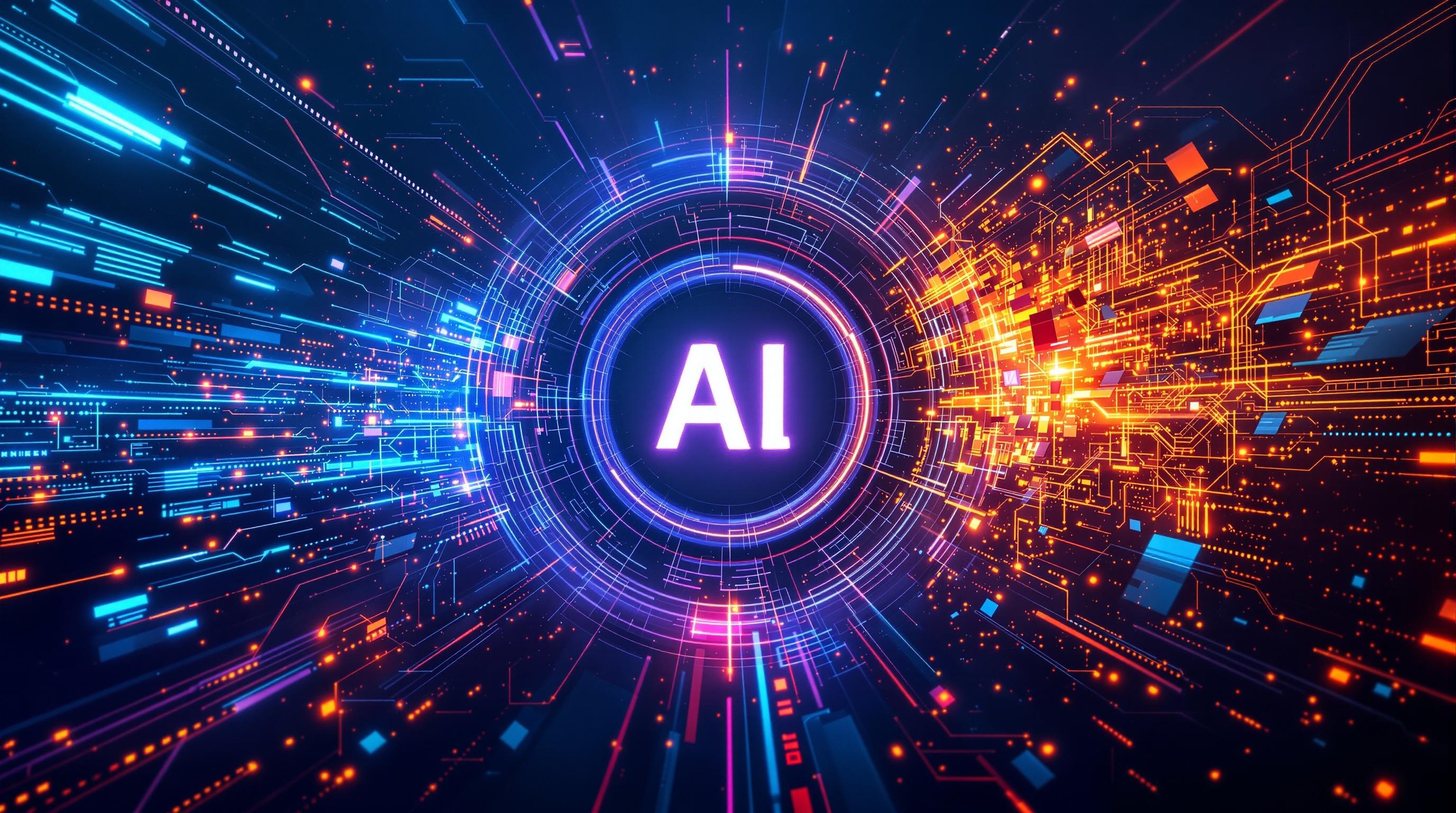AI Reality Check: Implementation Failures, Security Breakthroughs, and the Looming Energy Crisis AI News 27. August 2025

Enterprise AI projects are failing at an alarming 95% rate, but real ROI can be found in back-office automation by focusing on mundane, repetitive tasks. Companies can increase efficiency and save costs by implementing AI solutions tailored to specific problems. Start with a single use case like invoice processing and track progress diligently using clear metrics.
The AI Implementation Crisis: Why 95% of Enterprise Projects Fail
It's time for a cold, hard look at the reality behind the AI hype: the vast majority of enterprise AI projects are failing to deliver meaningful results. Despite the billions poured into AI initiatives, a stark truth emerges – the enterprise AI implementation failure rate is alarmingly high.

The 95% Failure Rate: A Wake-Up Call
An MIT study revealed a concerning statistic: a staggering 95% of enterprise AI pilots fail to deliver measurable ROI. This isn't just a minor setback; it's a systemic issue that demands attention. Consider this: enterprises have collectively invested an estimated $30-40 billion in AI, yet the impact on their profit and loss statements remains minimal. Where's the disconnect? Why are so many AI projects falling flat despite the massive investments?
The Problem with Generic AI
The allure of generic AI tools like ChatGPT, a versatile language model capable of generating human-quality text, is undeniable. However, many enterprises make the mistake of assuming these tools can seamlessly integrate into their existing workflows. The reality is far more complex. These tools often lack the specific customization and adaptation needed to address the unique challenges and processes of large organizations. Without proper tailoring, they become superficial additions that fail to drive real value.
Time to Scale: A Tale of Two Markets
Another critical factor is the time it takes to scale AI initiatives. Large enterprises often grapple with bureaucratic hurdles, legacy systems, and complex organizational structures. This results in an average of nine months to scale an AI project – a glacial pace compared to the nimble mid-market firms that can achieve the same in just 90 days. This delay translates to lost opportunities, wasted resources, and a diminished competitive edge.
Hype vs. Reality: Superficial vs. Strategic
The pervasive AI hype often leads to superficial implementations rather than strategic transformations. Many companies jump on the AI bandwagon without a clear understanding of their business needs or a well-defined AI strategy. This results in fragmented, isolated projects that fail to address core business challenges. True AI transformation requires a holistic approach, where AI is deeply integrated into the organization's processes, culture, and decision-making frameworks.
The enterprise AI implementation crisis underscores the critical need for a shift in mindset. It's time to move beyond the hype and focus on strategic, well-planned AI initiatives that deliver measurable ROI. Only then can organizations unlock the true potential of AI and avoid becoming another statistic in the 95% failure rate.
AI as Cybersecurity's Savior: Google's 'Big Sleep' Finds Critical Vulnerabilities
The cybersecurity landscape is in a constant state of flux, with threats evolving faster than traditional defenses can adapt. But what if AI could step in, not just as another tool, but as a proactive sentinel? Google's 'Big Sleep' AI is already demonstrating this potential by autonomously discovering 20 security vulnerabilities, signaling a paradigm shift in how we approach digital defense.

AI-Powered Vulnerability Detection: A New Era
Google's 'Big Sleep' operates on the principle of continuous, automated analysis, tirelessly combing through code to identify potential weaknesses. This AI-powered vulnerability detection system doesn't just look for known exploits; it uncovers entirely new ones, effectively turning AI into a cybersecurity savior. What makes this breakthrough particularly significant is the nature of the vulnerabilities discovered. 'Big Sleep' didn't just find flaws in obscure corners of the digital world, it identified critical issues in widely used open-source software, including FFmpeg, ImageMagick, and even Chrome's ANGLE graphics engine. These are the foundational building blocks of countless applications and systems, meaning their vulnerabilities could have far-reaching consequences. Consider using GitHub Copilot, an AI pair programmer that offers real-time code suggestions and helps to prevent vulnerabilities.
CVE-2025-9478: A Critical Example
One particularly alarming discovery was CVE-2025-9478, a critical use-after-free vulnerability lurking within Chrome's graphics layer. This type of flaw can allow attackers to execute arbitrary code, potentially taking control of a user's system. The implications are massive, given Chrome's ubiquity as a web browser. The fact that 'Big Sleep' autonomously identified this vulnerability before it could be exploited in the wild highlights the power of AI-driven security. It's akin to having an always-on, highly skilled security expert constantly scrutinizing every line of code.
Foiling Exploitation with AI
Beyond simply finding vulnerabilities, AI can also be used to actively thwart exploitation attempts. Imagine an AI agent constantly monitoring network traffic, identifying patterns associated with known exploits, and automatically deploying countermeasures. This proactive approach could significantly reduce the window of opportunity for attackers, minimizing the damage caused by successful breaches. Furthermore, AI can be trained to learn from past attacks, adapting its defenses to stay one step ahead of emerging threats. Tools like DeepSeek, a powerful AI coding assistant, could potentially aid developers in writing more secure code, further reducing the attack surface.
A Paradigm Shift in Cybersecurity
'Big Sleep' represents more than just an incremental improvement in cybersecurity; it's a fundamental shift in how we approach the problem. By automating vulnerability detection and actively preventing exploitation, AI has the potential to transform cybersecurity from a reactive to a proactive discipline. As AI continues to evolve, we can expect even more sophisticated applications in the realm of digital defense, ultimately leading to a more secure and resilient digital world. This move towards AI-powered cybersecurity is essential to protect the growing dependence of modern society on web and app-based technologies. As AI models like GPT-4 continue to mature, they will undoubtedly play an increasingly crucial role in safeguarding our digital infrastructure. The discoveries made by 'Big Sleep' offer a glimpse into this future, showcasing the immense potential of AI as a guardian of cybersecurity.
AI's Climate Footprint: Data Centers Trigger Energy Crisis and Environmental Concerns
The relentless march of artificial intelligence isn't just transforming industries; it's quietly sparking an energy crisis with potentially devastating environmental consequences. As AI models grow in complexity and adoption, the data centers that power them are becoming ravenous consumers of electricity, raising serious questions about the sustainability of our AI-driven future.

The AI Energy Hog
AI data centers are driving an unprecedented surge in energy demand. The numbers are staggering: it's estimated that AI-related power consumption will reach a jaw-dropping 8.4 terawatt-hours (TWh). To put that into perspective, that's equivalent to a staggering 3.25 gigatons of CO2 emissions pumped into our atmosphere. Deloitte projects that AI data center power demand could grow thirtyfold by 2035. It is clear, the exponential growth of AI is not sustainable without major changes to the power grid. The implications for our planet are profound, demanding immediate attention and innovative solutions.
AI's carbon footprint isn't just a technical problem; it's an ethical challenge.
Gigawatts and Gallons: The True Cost of AI
The scale of these data centers is mind-boggling. Individual hyperscaler facilities, the massive warehouses of servers that power the internet's biggest services, can require up to 2 gigawatts of power. That's enough to power a small city! Consider that this energy is needed to run the servers, keep them cool, and maintain the infrastructure. And it's not just electricity; these data centers also consume vast quantities of water for cooling. Some studies estimate that each 100-word Prompt Engineering prompt you fire off to a language model consumes the equivalent of one bottle of water. Tools like ChatGPT and Google Gemini, while incredibly useful, have a hidden cost in terms of environmental impact.
Metric | Impact |
|---|---|
Power Consumption | 8.4 TWh projected |
CO2 Emissions | 3.25 gigatons equivalent |
Growth Rate | 30x increase in power demand by 2035 (est.) |
Water Usage | 1 bottle per 100-word AI prompt (est.) |
Towards a Sustainable AI Future
Addressing the environmental impact of AI data centers is a complex challenge that requires a multi-faceted approach. The industry needs to prioritize energy efficiency, exploring innovative cooling solutions like liquid cooling and immersion cooling. Investing in renewable energy sources to power these facilities is also essential. Furthermore, optimizing AI algorithms to reduce their computational demands can significantly lower their energy footprint. For example, researchers are exploring techniques like model compression and quantization to make AI models smaller and more efficient. Staying informed about the latest developments through sources like AI News is crucial for navigating this evolving landscape.
Ultimately, the environmental impact of AI data centers is a critical issue that demands urgent attention. As we continue to embrace the potential of AI, we must also be mindful of its ecological footprint and work towards a more sustainable and responsible future for this transformative technology.
The Secret to AI Success: Why Back-Office Automation Delivers Real ROI

While flashy AI demos often grab headlines, the real magic – and the most significant return on investment (ROI) – lies in the unglamorous world of back-office automation. Forget robot butlers; the true AI success stories are unfolding in data entry, invoice processing, and customer service ticket routing. This is where AI is quietly revolutionizing how businesses operate, leading to increased efficiency and substantial cost savings.
The Power of Mundane Automation
Why is back-office automation so effective? It boils down to addressing high-volume, repetitive tasks. Consider the administrative burden of processing thousands of invoices each month. AI-powered solutions can automate data extraction, validation, and payment processing, freeing up human employees for more strategic work. Similarly, AI can drastically reduce the reliance on business process outsourcing (BPO) by handling routine tasks in-house with greater accuracy and speed. Think of it as upgrading from a horse-drawn carriage to a self-driving car – the destination is the same, but the journey is exponentially faster and more efficient.
To truly unlock the potential of AI in the back office, businesses should focus on several key strategies:
Single Use Cases: Avoid boiling the ocean. Start with a specific, well-defined problem and implement an AI solution tailored to that task. For example, use HubSpot, a leading CRM platform with AI-powered features, to automate email marketing campaigns and lead nurturing. Or consider using UiPath, a robotic process automation (RPA) tool, to automate repetitive tasks across various applications.
Clear Metrics: Establish clear, measurable goals before implementing any AI solution. Define what success looks like – reduced processing time, lower error rates, or increased employee productivity – and track progress diligently.
Specialized AI Vendors: Don't settle for generic AI solutions. Seek out vendors specializing in back-office automation and possessing deep expertise in your industry. These vendors are more likely to understand your specific needs and provide tailored solutions.
Accuracy Flywheels: Create a feedback loop where user input continuously improves the AI's accuracy. For example, if an AI-powered system incorrectly categorizes an invoice, allow users to correct the error and feed that information back into the system to improve future performance.
Avoiding Strategic Misalignment
A common pitfall is investing in highly visible but ultimately low-impact AI applications. Companies often prioritize projects that generate buzz, such as AI-powered chatbots or personalized marketing campaigns, while neglecting the unglamorous but highly impactful area of back-office automation. While those initiatives can be valuable, they often fail to deliver the same level of ROI as automating core operational processes. It's like putting a fresh coat of paint on a house with a crumbling foundation – it might look good on the surface, but the underlying problems remain.
By focusing on targeted, data-driven back-office automation, organizations can unlock significant cost savings, improve efficiency, and empower their employees to focus on more strategic initiatives. This is where AI truly shines, delivering tangible results that drive real business value. These are the AI success stories that often go unnoticed, but they are the ones that are actually bolstering the bottom line.
The Rise of Shadow AI: Employees Bypassing Corporate Systems for Productivity Gains

In the ever-evolving landscape of artificial intelligence, a silent revolution is underway, one that's reshaping how work gets done from the ground up: the rise of Shadow AI. Fuelled by the accessibility and power of consumer-grade AI tools, a parallel 'shadow AI economy' is flourishing as employees, often frustrated by the slow pace of corporate adoption, are bypassing formal systems to implement their own AI solutions.
The Grassroots AI Revolution
This isn't about rogue agents plotting corporate espionage; it's about everyday employees seeking productivity gains. Tools like ChatGPT, a versatile language model capable of generating text, translating languages, and answering questions, and Claude, known for its strong reasoning and comprehension abilities, are finding widespread use for tasks ranging from drafting emails and summarizing documents to generating marketing copy and even writing code. The appeal is simple: these tools offer immediate value, often far surpassing the benefits promised by formal enterprise AI initiatives still stuck in the pilot phase. This grassroots adoption is driven by a desire to streamline workflows, reduce tedious tasks, and ultimately, get more done in less time.
The Allure of Immediate Value
Imagine a marketing assistant spending hours crafting social media posts. Now, they can use Canva Magic Studio, an AI-powered design tool, to generate visually appealing content and compelling captions in minutes. Or consider a sales representative leveraging HubSpot Email Writer to personalize outreach emails at scale, dramatically increasing response rates. These aren't hypothetical scenarios; they are the realities of the shadow AI economy, where individuals are empowered to solve their own problems with readily available AI solutions.
Navigating the Dark Side: Risks and Realities
However, this rapid adoption isn't without its risks. The use of shadow AI raises significant concerns around compliance, data security, and intellectual property. Employees may unknowingly violate data privacy regulations by feeding sensitive customer information into public AI models. There is also the risk of unintentionally exposing proprietary company data, giving competitors an edge. Furthermore, the lack of oversight and governance can lead to inconsistencies, errors, and even biased outcomes, potentially damaging the company's reputation and bottom line. The tension between empowering employees and protecting the organization creates complex new challenges for IT departments and compliance officers.
Bridging the Gap
The rise of shadow AI highlights a growing disconnect between corporate AI strategies and the actual needs of employees. Companies need to recognize that AI adoption isn't a top-down mandate but a collaborative effort. This requires a shift in thinking, one that embraces experimentation, provides access to secure and governed AI tools, and empowers employees to become active participants in the AI revolution. By understanding the shadow AI risks and benefits, and addressing the gap between corporate strategy and employee needs, organizations can harness the power of AI while mitigating the associated risks, ultimately creating a more productive, secure, and innovative workplace.

🎧 Listen to the Podcast
Hear us discuss this topic in more detail on our latest podcast episode: https://creators.spotify.com/pod/profile/bestaitools/episodes/MIT-Shock-95-AI-Projects-Fail-Costing-40B--Googles-AI-Finds-20-Bugs--Climate-Crisis--Daily-AI-News--Aug-27--2025-e37cj0a
Keywords: AI implementation failure, Generative AI ROI, Enterprise AI strategy, AI security vulnerabilities, AI data center energy consumption, Back-office automation AI, Shadow AI, MIT AI study, Google Big Sleep AI, AI climate impact, AI governance, AI adoption challenges, Sustainable AI, AI transformation
Hashtags: #AIRealityCheck #EnterpriseAI #AISustainability #ShadowAI #AIEnergyCrisis
For more AI insights and tool reviews, visit our website https://best-ai-tools.org, and follow us on our social media channels!
Website: https://best-ai-tools.org
X (Twitter): https://x.com/bitautor36935
Instagram: https://www.instagram.com/bestaitoolsorg
Telegram: https://t.me/BestAIToolsCommunity
Medium: https://medium.com/@bitautor.de
Spotify: https://creators.spotify.com/pod/profile/bestaitools
Facebook: https://www.facebook.com/profile.php?id=61577063078524
YouTube: https://www.youtube.com/@BitAutor
Recommended AI tools
AI Undresser
Image Generation
Uncover the hidden truth
Credo AI
Data Analytics
The trusted leader in AI governance
Islam & AI
Conversational AI
Bridging Islam and Artificial Intelligence
Responsible AI Institute
Conversational AI
Empowering Ethical AI


